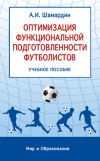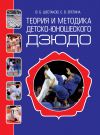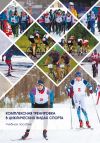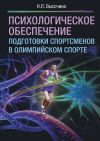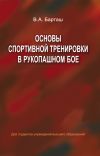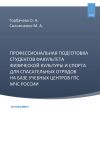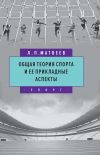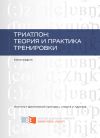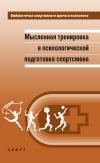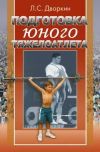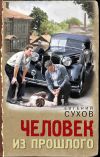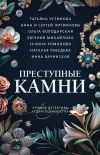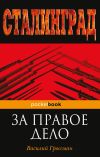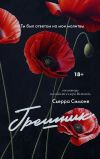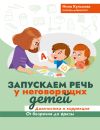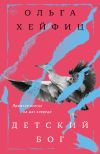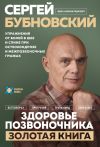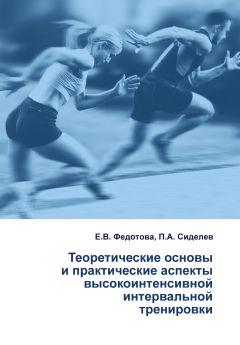
Автор книги: П. Сиделев
Жанр: Спорт и фитнес, Дом и Семья
Возрастные ограничения: +16
сообщить о неприемлемом содержимом
Текущая страница: 14 (всего у книги 14 страниц)
244. Ullah, M.S. The plasma membrane lactate transporter MCT4, but not MCT1, is up-regulated by hypoxia through a HIF-1alpha-dependent mechanism / M.S. Ullah, A.J. Davies, A.P. Halestrap // Journal of Biological Chemistry. – 2006. – Vol. 281. – № 14. – P. 9030–9037.
245. Uth N, Sørensen H, Overgaard K, Pedersen PK. Estimation of VO2max from the ratio between HRmax and HRrest – the Heart Rate Ratio Method. Eur J Appl Physiol. 2004 Jan;91(1):111–5. doi: 10.1007/s00421-003–0988-y. Epub 2003 Nov 18. Erratum in: Eur J Appl Physiol. 2005 Jan;93(4):508–9. PMID: 14624296.
246. Verheul, J., Nedergaard, N., Vanrenterghem, J., Robinson, M.. (2020). Measuring biomechanical loads in team sports – from lab to field. 10.31236/osf.io/5pt3y.
247. Vesterinen, V. Individual Endurance Training Prescription with Heart Rate Variability / V. Vesterinen, A.Nummela, I. Heikura [et al.] // Medicine and science in sports and exercise. – 2016. – Vol. 48. – № 7. – P. 1347–1354.
248. Viana, R.B., de Lira, C.A.B., Naves, J.P.A. et al. Can We Draw General Conclusions from Interval Training Studies?. Sports Med 48, 2001–2009 (2018). https://doi.org/10.1007/s40279-018–0925-1.
249. Wahl P, Mathes S, Achtzehn S, Bloch W, Mester J. Active vs. passive recovery during high-intensity training influences hormonal response. Int J Sports Med. 2014 Jun;35(7):583–9. doi: 10.1055/s-0033–1358474. Epub 2013 Nov 20. PMID: 24258473.
250. Wahl, P. Effects and Sustainability of a 13-Day High-Intensity Shock Microcycle in Soccer / P. Wahl, M.Güldner, J. Mester // Journal of sports science and medicine. – 2014. – Vol. 13. – № 2. – P. 259–265.
251. Wang, T., Mao, J., Bo, S. et al. Acute effects of resistance-type and cycling-type high-intensity interval training on arterial stiffness, cardiac autonomic modulation and cardiac biomarkers. BMC Sports Sci Med Rehabil 16, 14 (2024). https://doi.org/10.1186/s13102-024–00806-8.
252. Warr-di Piero, D. Effects of work-interval duration and sport specificity on blood lactate concentration, heart rate and perceptual responses during high intensity interval training / D. Warr-di Piero, T. Valverde-Esteve, J. C. Redondo-Castán [et al.] // PLoS One – 2018. – Vol. 13. – № 7. —P. 1–12.
253. Way, K. The effect of high Intensity interval training versus moderate intensity continuous training on arterial stiffness and 24h blood pressure responses: A systematic review and meta-analysis / K.L. Way, R.N. Sultana, A. Sabag [et al.] // Journal of science and medicine in sport. – 2019. – Vol. 22.– № 4. – P. 385–391.
254. Wen, D. Effects of different protocols of high intensity inter-val training for VO2max improvements in adults: A meta-analysis of randomised controlled trials. / D. Wen, T. Utesch, J. Wu [et al.] // Journal of science and medicine in sport. – 2019. – Vol. 22. – № 8. – P. 941–947.
255. Westgarth-Taylor C, Hawley JA, Rickard S, Myburgh KH, Noakes TD, Dennis SC. (1997) Metabolic and performance adaptations to interval training in endurance-trained cyclists. Eur J Appl Physiol Occup Physiol. 1997;75(4):298–304.
256. Weston, A. R. Skeletal muscle buffering capacity and endurance performance after high-intensity interval training by well-trained cyclists / A.R. Weston, K.H. Myburgh, F.H. Lindsay [et al.] // European Journal of Applied Physiology and Occupational Physiology. – 1996. – Vol. 75. – № 1. – P. 7–13.
257. What is Interval Training? // Boot Camp & Military Fitness Institute, 2017. – 53 p. – URL: https://bootcampmilitaryfitnessinstitute.com/wp-content/uploads/20 1 3/05/0-what-is-interval-training-2017–07-26.pdf (date of the application: 18.04.2023).
258. Xueqian, Z. High-intensity interval training applied to physical training / Z. Xueqian, W. Jiechun // Revista Brasileira de Medicina do Esporte. – 2023. – Vol. 29. – P. 1–4.
259. Yang, M. Effects of high-intensity interval training on canoeing performance / M.T. Yang, M.M. Lee, S.C. Hsu, K.H. Chan // European Journal of Sport Science. – 2017. – Vol. 17. – № 7. – P. 814–820.
260. You Y, Li W, Liu J, Li X, Fu Y and Ma X (2021) Bibliometric Review to Explore Emerging High-Intensity Interval Training in Health Promotion: A New Century Picture. Front. Public Health 9:697633. doi: 10.3389/fpubh.2021.697633.
261. Zelt, J.G.E. Reducing the volume of sprint interval training does not diminish maximal and submaximal performance gains in healthy men / J.G.E. Zelt, P.B. Hankinson, W.S. Foster [et al.] // European journal of applied physiology. – 2014. – Vol. 114. – P. 2427–2436.
262. Zheng M, Liu C, Lv Y, et al. Comparisons of high intensity interval training and continuous training on metabolomic alteration and cardiac function in male adolescent rats. Front Physiol. 2022; 1 3:900661.
263. Zinner, C. The Physiological Mechanisms of Performance Enhancement with Sprint Interval Training Differ between the Upper and Lower Extremities in Humans / C. Zinner, D. Morales-Alamo, N. Ørtenblad [et al.] // Frontiers in physiology. – 2016. – Vol. 7. – P. 1–19.
264. Zourdos, M. C. Novel Resistance Training – Specific Rating of Perceived Exertion Scale Measuring Repetitions in Reserve / MC Zourdos, A Klemp, C Dolan [et al.] // The Journal of Strength and Conditioning Research. – 2016. – Vol. 30. – № 1. – P. 267–275.
Правообладателям!
Это произведение, предположительно, находится в статусе 'public domain'. Если это не так и размещение материала нарушает чьи-либо права, то сообщите нам об этом.